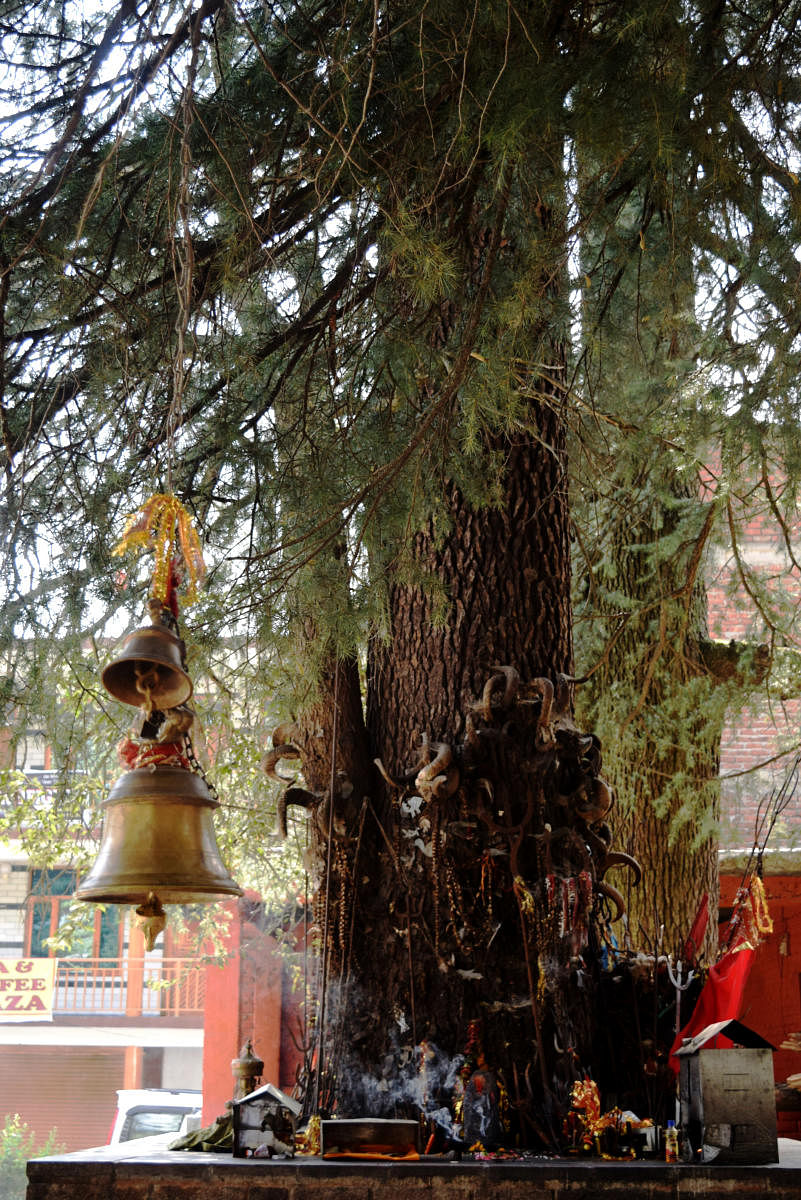
With 33 million gods and as many, if not more mythological stories defining the way we conduct our daily lives, it is no surprise to come across unusual beliefs and some very unusual traditions and practices.
So while there is a temple with an idol of Mahakal so ferocious, high up in the barren hills of Leh that it is rumoured to scare pregnant women and adversely affect the foetus, there is also a temple of fertility goddess Garbarakshambigai in Tamil Nadu which blesses thousands of women with motherhood. If there is a practice of offering liquor to Kalbhairav in Ujjain, then there is also a tradition to offer hair at Tirupati.
Many such intriguing traditions are followed by devotees across the country to get their prayers answered.
Goludevta Temple,
Ghorakhal, Uttarakhand
An incarnation of Gaur Bhairav Shiva, Goludevta is a god of Kumaon and eastern Garhwal. The devotees regard him as a god who dispenses justice fairly and quickly.
A little further to Nainital, a set of winding stone steps lead through tall coniferous trees to the small temple of this god. The temple structure may be nothing to write home about but what catches the eye are thousands of big and small bells almost everywhere, hanging from pillars, tree branches, railings and walls of the temple.
A belief that all legal glitches would reach a favourable conclusion inspires devotees to file handwritten petitions to the god. Everyday, hundreds of requests for speedy settling of legal matters flood the temple. For every prayer answered, the devotees offer bells to the temple. If the number of bells is anything to go by, it seems a lot many devotees have had beneficial verdicts.
Tripura Sundari Temple,
Naggar, Himachal Pradesh
On the way to Nicholas Roerich Art Gallery from Naggar Castle stands the ancient temple of Tripura Sundari, one of the prominent goddesses of tantric practices. The temple, a typical example of traditionl kath-kuni architecture of Himachal Pradesh, was built by King Yashodhapal. Sharhi Jatra, a fair held in early June, is a grand affair when the goddess travels to nearby villages on a decorated palanquin.
It is however, on the first day of Baisakhi, that the temple sees a very unusual practice. It is on this day that devotees offer shrouds of dead bodies as clothes to the goddess. Perhaps, one of the hymns in Lalitha Sahsranamam describing her as supreme Shakti sitting on the corpses of Brahma, Vishnu, Shiva and Rudra, might have been the origin of such a tradition.
Ghatotkach Temple, Manali,
Himachal Pradesh
Ghatotkach, son of Pandava prince Bhima and rakshasi or ogress Hidimbi, though abandoned by his illustrious father, sacrificed himself to save Pandavas in the epic 18-day war of Mahabharata. Ghatotkach, being half-human and half-rakshasa, was believed to have magical powers which made him a formidable warrior in the war. He caused massive destruction to the large Kaurava army before falling to celestial weapons.
The temple, however, is a tree temple with a nondescript stone idol instead of a typical structure. A huge deodar tree becomes the altar for the offerings of knives, spears, swords and horns of wild mountain goats.
Tannot Mata Temple,
Longewala, Rajasthan
Tannot, a small village near the Pakistan border and close to the 1971 Indo-Pak battle site Longewala, is a sandy expanse of Thar Desert with sparse vegetation and the Indian army and BSF spread along the periphery of the village. The temple, once a small structure, can house a congregation of 100 or more people for daily prayers. The temple management is with the BSF. The priests are active soldiers who have willingly taken up this as their additional duty.
It is said that during the 1965 and 1971 wars, even after heavy shelling by the Pakistani military, the temple remained unscathed. In fact, none of the bombs that dropped here, exploded. These unexploded bombs now find a place in a mini-museum at the temple site.
The soldiers and other devotees tie a handkerchief in the temple with the belief that they would return safely and take their handkerchief back someday.
Kamakhya Devi Temple,
Guwahati, Assam
One of the oldest Shakti peetha, Kamakhya Temple in Guwahati holds tremendous importance in tantric beliefs. The garbhagriha or the inner sanctum is a deep dark narrow cave below the ground level, accessed through small steps. The stone sheets in the cave look similar to the shape of vagina. The vulva-shaped depression, which is perpetually filled with water through an underground spring, is worshipped as Goddess Kamakhya.
It is said that every month the temple remains closed for five days when the reddish-tinged water is seen flowing from the temple drain. This is symbolic to the goddess menstruating. Devotees who witness this phenomenon consider themselves blessed.
The phenomenon might be due to the dissolving of sediments of the reddish rocks which are also used to prepare special Kamakhya sindoor in the water from the spring.
It is indeed our faith in individual gods that keeps us ticking. So, as long as there are inexplicable events, there will be myths and there will be those unusual prayers!